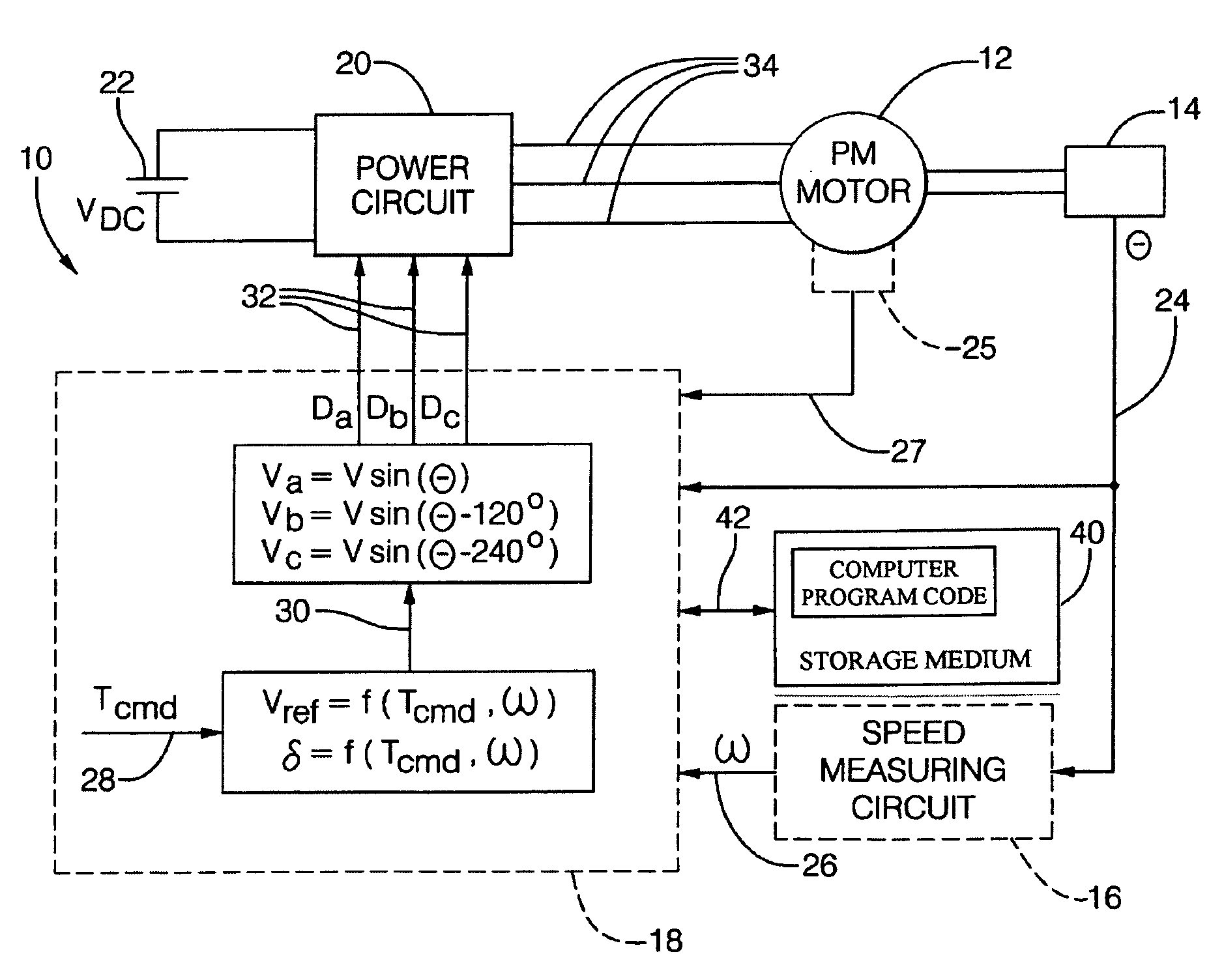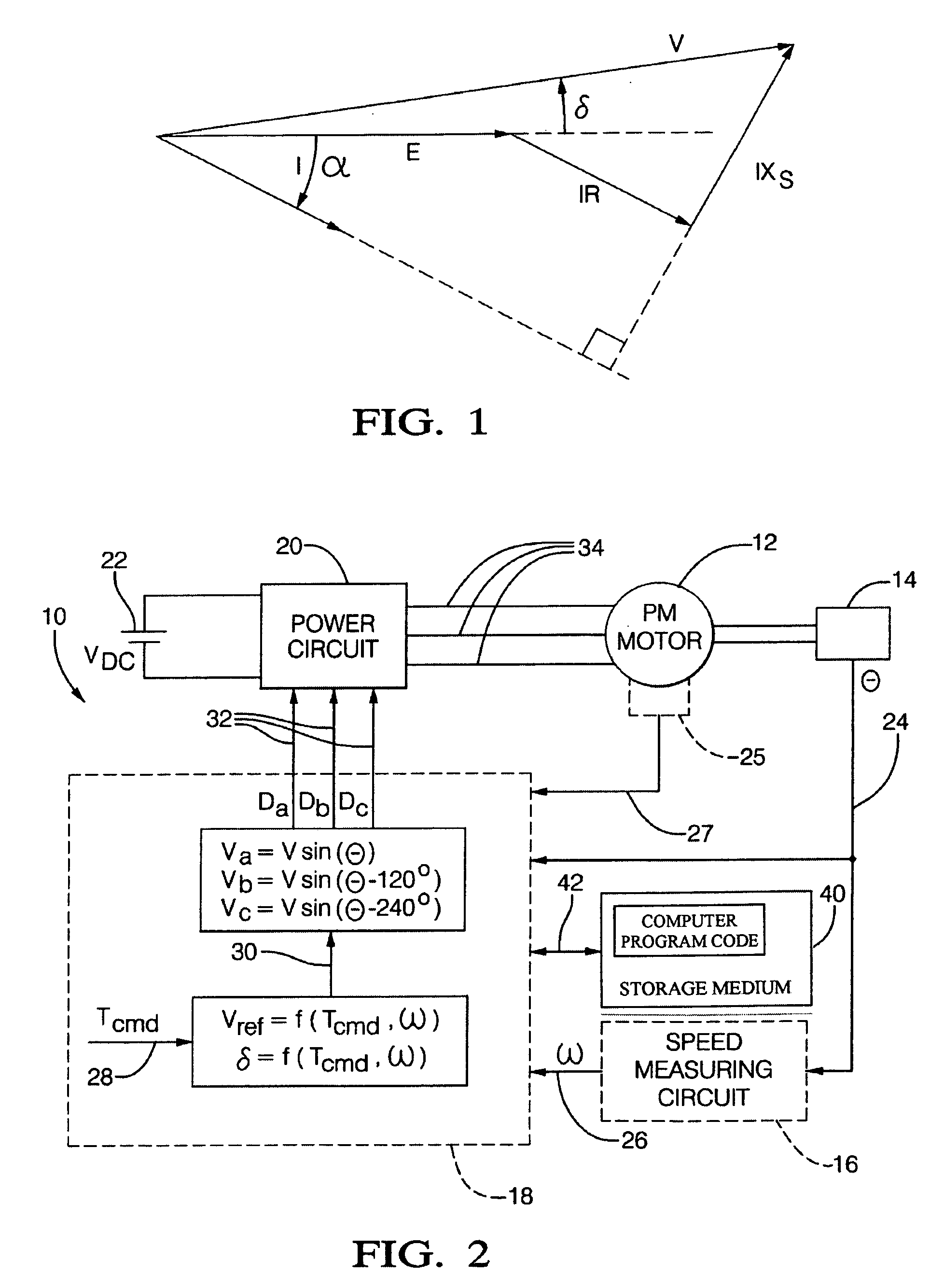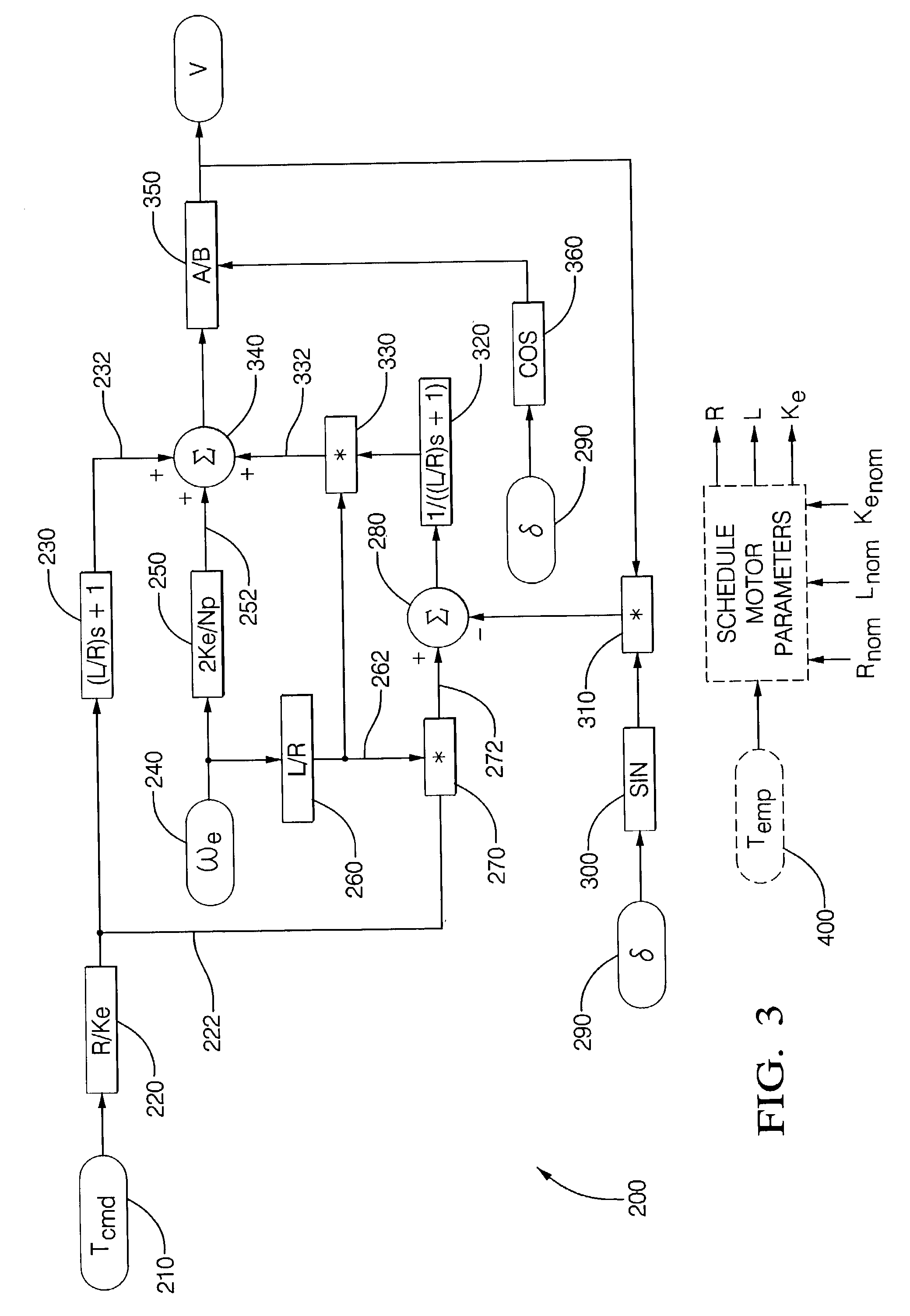Transient compensation voltage estimation for feedforward sinusoidal brushless motor control
a brushless motor and compensation voltage technology, applied in the direction of electronic commutators, electric programme control, instruments, etc., can solve the problems of parasitic torque ripple components at various frequencies, deviations from pure sinusoidal back emf and current waveforms, and typical power requirements of electric power steering
- Summary
- Abstract
- Description
- Claims
- Application Information
AI Technical Summary
Problems solved by technology
Method used
Image
Examples
Embodiment Construction
[0016]Referring now to the drawings in detail, FIG. 2 depicts a PM motor system 10 where numeral 10 generally indicates a system for controlling the torque of a sinusoidally excited PM electric machine 12 (e.g. a motor, hereinafter referred to as a motor). The system includes, but is not limited to, a motor rotor position encoder 14, a speed measuring circuit 16, a controller 18, power circuit or inverter 20 and power source 22. Controller 18 is configured to develop the necessary voltage(s) out of inverter 20 such that, when applied to the motor 12, the desired torque is generated. Because these voltages are related to the position and speed of the motor 12, the position and speed of the rotor are determined. A rotor position encoder 14 is connected to the motor 12 to detect the angular position of the rotor denoted θ. The encoder 14 may sense the rotary position based on optical detection, magnetic field variations, or other methodologies. Typical position sensors include potentio...
PUM
 Login to View More
Login to View More Abstract
Description
Claims
Application Information
 Login to View More
Login to View More - R&D
- Intellectual Property
- Life Sciences
- Materials
- Tech Scout
- Unparalleled Data Quality
- Higher Quality Content
- 60% Fewer Hallucinations
Browse by: Latest US Patents, China's latest patents, Technical Efficacy Thesaurus, Application Domain, Technology Topic, Popular Technical Reports.
© 2025 PatSnap. All rights reserved.Legal|Privacy policy|Modern Slavery Act Transparency Statement|Sitemap|About US| Contact US: help@patsnap.com



